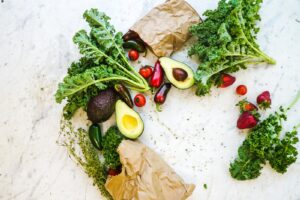Valentine’s Day, celebrated on February 14, is set aside to honor those you love. Traditional expressions of love on Valentine’s Day are cards, flowers, food, and jewelry. One of the foods of love is chocolate. The botanical name for chocolate is Theobroma cacao, which means “food of the gods”.
But you don’t have to be a god to love chocolate!
The Aztecs thought that chocolate was an aphrodisiac. Research has now shown that the ancient wisdom could be true. A recent study showed the connection between eating sweet foods and romantic feelings. Specifically, chocolate helps to release dopamine and serotonin in the brain, and those are some of our feel-good chemicals.ƒ
Chocolate is full of iron, magnesium, manganese, copper, and zinc. Each of these is a required mineral for humans, so chocolate is a tasty way to get these into your diet. Women often have a craving for chocolate, especially around their periods, possibly because of their need for more magnesium. Chocolate is also a good source of antioxidants and polyphenols. Other foods that include polyphenols are tea and red wine, and their consumption has been linked to a number of health benefits including lower blood pressure, better blood flow, and improved blood sugar levels. Chocolate also includes the stimulants caffeine and theobromine, but at much lower levels than in coffee.
Consume healthier chocolate by cooking from scratch.
The problem with many chocolate products is that they are full of too much added sugar or other problematic ingredients. I like to make chocolate desserts from scratch so that I can control for them. When you purchase chocolate or cocoa, don’t use “dutched” cocoa, which is processed with alkali, because this reduces the polyphenols by as much as 60%. Instead use plain unsweetened cocoa, preferably organic. You should also consider the amount and type of sugar you use in recipes. I prefer to use fruits such as dates, or natural sugars like honey, maple syrup, or coconut sugar. I often also experiment with the amount of sugar and can often use up to 1/3 less than in the recipe without negatively affecting the taste.
Why not try this simple and healthy chocolate dessert for your Valentine’s Day celebration this year?
Chocolate Brownie Bites
- 1 cup raw almonds and/or walnuts and/or pecans
- 1 1/2 cups pitted Medjool dates
- 4 tbsp cocoa powder
- 4 tbsp shredded unsweetened coconut
- 1 tbsp coconut oil, melted
- 1/8 tsp salt
- 1 tsp vanilla extract
- water, as needed
Combine all ingredients, except water, in the order listed, in the bowl of a food processor. Process until the mixture resembles coarse gravel. Add water, one teaspoonful at a time, and process. Once the mixture sticks together when you mash it, you have the right consistency. If not, add more water, but don’t add too much or the bites will be too sticky. I usually need 2 – 3 teaspoons of water. Roll the mixture into tablespoon-size balls. Yield is about 15 – 18 balls. Store them in an airtight container in the refrigerator.






